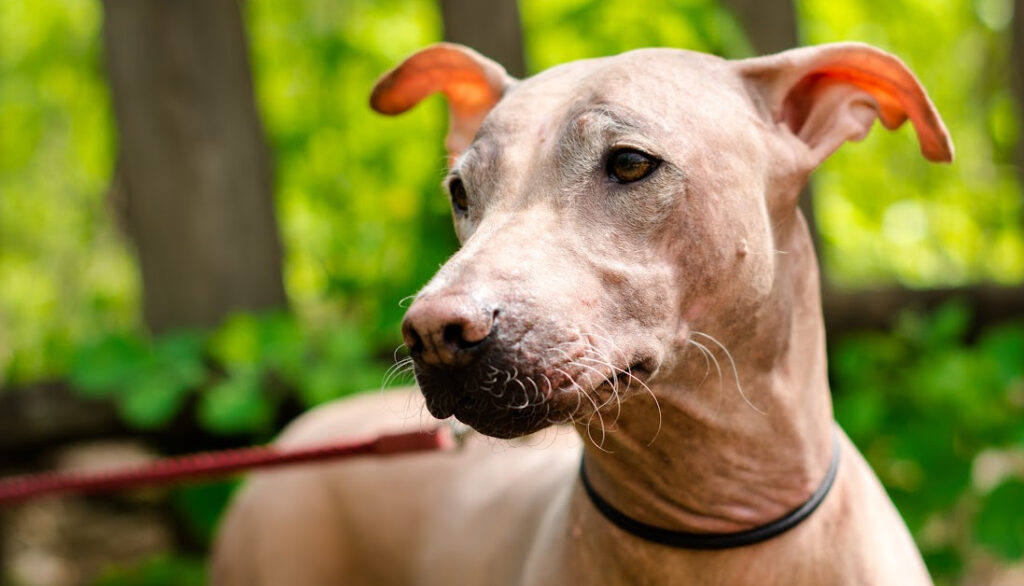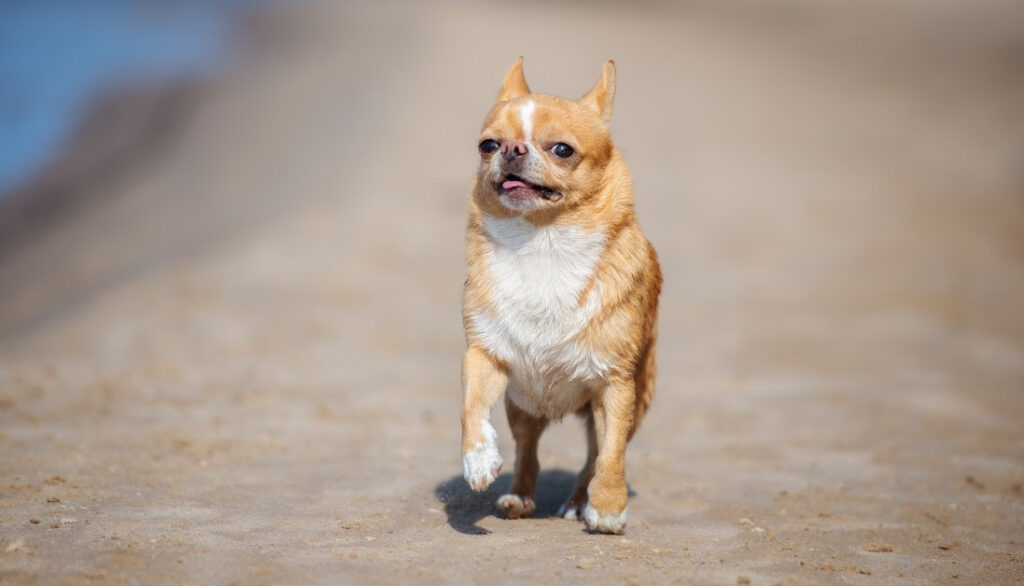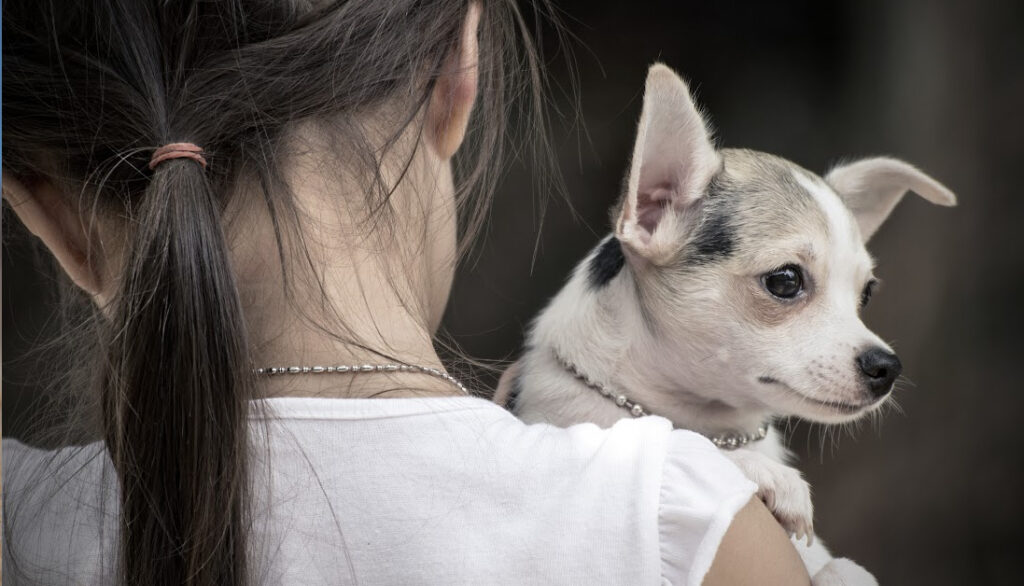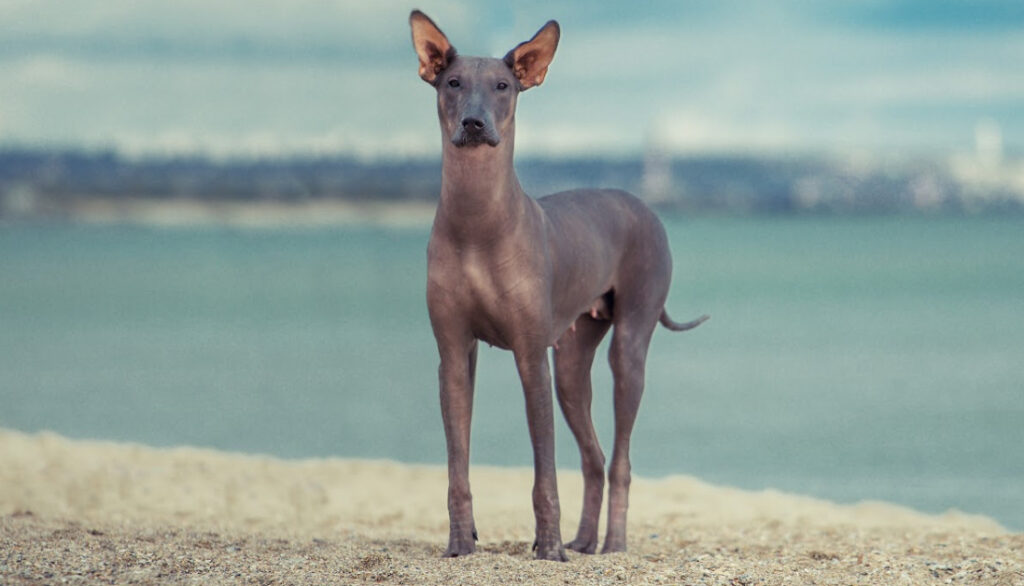As a holistic veterinarian, one of the privileges I enjoy is discovering the rich tapestry of canine heritage around the world. Mexican dog breeds are particularly fascinating, with their unique blend of history, culture, and individual traits that set them apart.

These delightful creatures, like the Chihuahua and the Xoloitzcuintli, can trace their lineage back to ancient times, making them living pieces of history. They’ve evolved alongside humans, shaping and being shaped by the culture they’ve grown in. Their roles in society have shifted over time, from sacred animals in ancient civilizations, to beloved pets in modern households. Their endearing quirks and distinct physical features are a testament to their rich heritage.
However, it’s not just their history that makes Mexican dog breeds so special. Each breed has its own set of unique characteristics, both in appearance and behavior. These can range from the diminutive size and feisty personality of the Chihuahua to the tranquil, otherworldly appearance of the hairless Xoloitzcuintli. And while each breed may have its distinct traits, they all share a common thread of adaptability and resilience that’s emblematic of their Mexican heritage.
Caring for these breeds requires a nuanced understanding of their dietary needs, exercise requirements, and potential health concerns. Some are prone to certain illnesses, while others need specialized care to maintain their skin or coat. But with the right knowledge and approach, these breeds can thrive and bring joy to any home.
Whether you’re considering adopting a Mexican dog breed, or simply want to learn more about them, this exploration into their history, traits, and care needs is sure to provide valuable insights. As we delve into this journey together, I hope that you will join me in celebrating the rich heritage of these unique Mexican breeds, and their important role in our world.

History of Dog Breeds in Mexico
Welcome to a journey unlike any other, where we time travel through the rich and vibrant history of Mexican dog breeds. As a dog parent, I can’t wait to share this fascinating tale of canine heritage that has evolved over thousands of years. So, let’s delve into the past and explore the origins of these remarkable canine companions.
Ancient Mexican Dog Breeds
The history of Mexican dog breeds traces back to ancient civilizations, where dogs held significant roles in society, culture, and spirituality. Our story begins with the Xoloitzcuintli, a breed dating back over 3,000 years to the time of the Aztecs and Mayans. Commonly known as the Mexican hairless dog, the Xoloitzcuintli, or ‘Xolo,’ was considered sacred and held various roles from a companion to a protector of the home.
But the Xolo isn’t the only ancient breed. The Techichi, a small, sturdy dog, is believed to be the ancestor of the modern Chihuahua. These dogs were cherished companions of the Toltec civilization, and fascinatingly, evidence of their existence is found in artifacts and paintings dating back thousands of years.
Evolution of Dog Breeds in Mexico
Fast forward to the 19th century, Mexico’s dog breeds began to evolve, partly due to colonization and the introduction of foreign breeds. The Chihuahua breed, as we know it today, emerged during this period. Named after the Mexican state where they were discovered, these tiny dogs quickly captivated people with their charming personality and diminutive size.
The 20th century saw a revival of interest in preserving the Xoloitzcuintli breed as a symbol of Mexican heritage. The renowned Mexican artists, Diego Rivera and Frida Kahlo, played a significant role in popularizing these dogs, often featuring them in their art.
However, it’s not just the Chihuahua and Xoloitzcuintli that Mexico has gifted to the world. Other breeds like the Mexican Pit Bull, Chamuco, and Calupoh (Mexican Wolfdog) also have their roots in this diverse country. Each of these breeds is a testament to Mexico’s rich canine heritage, with unique traits and qualities that are deeply ingrained in the nation’s culture and history.
In the world of dog breeds, Mexico’s contributions are truly unparalleled. From the ancient Xoloitzcuintli and Techichi to the modern Chihuahua and beyond, these dogs have journeyed through history, evolving and adapting alongside their human companions. As we learn more about the history of Mexican dog breeds, we gain a deeper appreciation for these incredible animals and the rich culture that they represent.
I encourage you to honor the rich history of these breeds and the culture they symbolize. After all, every Mexican dog breed carries a piece of Mexican history within them, making them not just pets, but living, breathing pieces of heritage.

Most Popular Mexican Dog Breeds
Detailed Description of the Chihuahua
When it comes to Mexican dog breeds, the Chihuahua is arguably the most famous. This pint-sized pooch has become a global sensation, renowned for its small stature, distinct apple-shaped head, and vivacious personality.
Chihuahuas generally weigh between two to six pounds and measure about five to eight inches in height, making them one of the smallest dog breeds in the world. Despite their small size, they’re known for their big personalities. Chihuahuas are lively, alert, and often fearless, exhibiting an almost terrier-like character.
The Chihuahua’s coat comes in two varieties: smooth and long. The smooth-coated Chihuahuas have a soft, glossy coat, while the long-coated ones boast a silky, flowing coat. Coat colors can range from solid colors like black, white, fawn, chocolate, gray, and silver, to multicolor or patterned variations. Their expressive eyes and erect ears add to their unique charm.
Understanding the Xoloitzcuintli
Another immensely popular Mexican dog breed is the Xoloitzcuintli (pronounced show-low-eats-queen-tlee), affectionately known as the Xolo. This breed is revered as a national treasure in Mexico, with a history that dates back over 3,000 years.
The Xoloitzcuintli is known for its striking appearance. Most notably, this breed is hairless, although a coated variety exists too. The hairless Xolos have smooth, tough skin that’s prone to sunburn, while coated Xolos have a short, flat coat. They come in three sizes: toy, miniature, and standard, offering variety for different types of households.
Xolos exhibit a calm, tranquil demeanor. They are intelligent, attentive, and make excellent companion dogs. They’re known for their loyalty and affinity towards their family, often forming a close bond with one particular person.
Their unique genetic makeup and lack of hair mean they have a higher body temperature than most dogs, often making them feel warm to the touch. This physical trait led to the belief in ancient times that they possessed healing properties, further enhancing their cultural significance.
In conclusion, both the Chihuahua and the Xoloitzcuintli, each with their unique traits, distinct appearances, and rich histories, are the crowning jewels of Mexican canine heritage. Whether you appreciate the Chihuahua’s lively spirit and charming looks or the Xolo’s calm demeanor and unique appearance, both breeds epitomize the rich canine diversity that Mexico offers to the world.
Unique Characteristics of Mexican Dog Breeds
There’s an undeniable allure to Mexican dog breeds that comes from their fascinating history, rich cultural significance, and distinctive features. Let’s delve into the unique physical and behavioral traits of these charming pets.
Physical Traits of Mexican Dog Breeds
Mexican dog breeds have unique physical traits that set them apart from other breeds. For instance, the Chihuahua, one of the smallest dog breeds globally, typically weighs between 2 to 6 pounds and stands about 5 to 8 inches tall. They have a well-rounded ‘apple dome’ head and large expressive eyes. Their tiny size doesn’t hinder their agility, making them perfect companions for those living in apartments or smaller spaces.
The Xoloitzcuintli or Mexican Hairless Dog, on the other hand, can range from toy to standard sizes, with the latter reaching up to 60 pounds in weight. As suggested by the name, one of their most striking features is their hairless dark skin, although a coated variety does exist. This breed is also known for its bat-like ears, almond-shaped eyes, and strong, athletic build.
Behavioral Traits of Mexican Dog Breeds
When it comes to their behavior, Mexican dog breeds are as diverse as their appearance. Chihuahuas are known for their vivacious and bold personalities. Despite their diminutive size, they carry a big-dog attitude and aren’t afraid to stand up to larger animals. They are fiercely loyal to their owners and can be protective, making them excellent watchdogs.
Xoloitzcuintlis have a calm and tranquil demeanor. They are intelligent and eager to please, making them relatively easy to train. Despite their aloofness towards strangers, they are incredibly affectionate and loyal to their families. They also have a unique trait of being good climbers and enjoy vantage points from where they can survey their territory.
Both of these Mexican dog breeds have a love for play and exercise. They are energetic creatures that require regular mental and physical stimulation to keep them happy and healthy. Despite their contrasting personalities, both breeds are known for their loyalty and devotion to their families.
Whether it’s the compact and feisty Chihuahua or the calm and composed Xoloitzcuintli, Mexican dog breeds bring a unique blend of traits to the canine world. Their distinct physical features coupled with their diverse personalities make them truly special companions.

Caring for Mexican Dog Breeds
When it comes to caring for Mexican dog breeds, understanding their dietary requirements and exercise needs is essential. Each breed has unique needs that must be met to ensure they lead healthy and fulfilling lives. Let’s dive into the specifics.
Dietary Requirements for Mexican Dogs
Like all dogs, Mexican breeds require a balanced diet to maintain optimal health. But what does this mean exactly for breeds like the Chihuahua and the Xoloitzcuintli?
The Chihuahua, being a small breed, doesn’t require a large amount of food. However, they do need a diet high in quality protein and fat to support their high energy levels. It’s also important to note that Chihuahuas can be prone to obesity, so portion control is crucial. Foods specially formulated for small breeds can be a good choice.
On the other hand, the Xoloitzcuintli, or Mexican Hairless Dog, has a slightly different dietary requirement. This breed comes in three sizes: toy, miniature, and standard. Each size will have different caloric needs, but all Xolos will benefit from a diet rich in quality protein and low in fillers. Given their lack of hair, Xolos may also benefit from a diet enriched with fatty acids to support skin health.
Exercise and Training Needs of Mexican Dog Breeds
Exercise is vital for all dogs, and Mexican breeds are no exception. However, the type and amount of exercise needed can vary greatly between breeds.
Chihuahuas, despite their small size, are quite energetic and require regular exercise to maintain a healthy weight. This can include daily walks and playtime. However, due to their small size, they can easily get the exercise they need indoors, making them suitable for apartment living.
The Xoloitzcuintli, on the other hand, is an active and athletic breed that requires more exercise. Regular walks, playtime, and even agility training can be beneficial. However, keep in mind that Xolos can be sensitive to extreme temperatures due to their lack of fur, so take care when exercising them in hot or cold weather.
When it comes to training, both the Chihuahua and Xoloitzcuintli are intelligent breeds that respond well to positive reinforcement techniques. Early socialization and obedience training are recommended to ensure they grow into well-behaved and confident dogs.
Understanding and meeting the dietary, exercise, and training needs of your Mexican dog breed can lead to a healthier, happier pet. Remember, every dog is unique, so it’s important to tailor your care to suit your dog’s individual needs.
Health Concerns in Mexican Dog Breeds
Common Health Problems in Chihuahuas
Chihuahuas, one of the most well-known Mexican dog breeds, are generally healthy but as with any breed, they are prone to certain medical conditions. Their petite structure makes them susceptible to dental issues like gum disease and tooth decay. Regular teeth cleaning and dental check-ups can help prevent these problems.
They also have a predisposition to heart disease, specifically heart murmurs and patent ductus arteriosus, a congenital heart defect. Regular vet checks can help detect these conditions early. Additionally, Hypoglycemia (low blood sugar) is common in small breeds like Chihuahuas. Ensuring they eat small, frequent meals can help manage this condition.
It’s worth noting that Chihuahuas can suffer from a condition called hydrocephalus, where fluid builds up in the brain. Symptoms include a larger than normal head size, seizures, and difficulty with training.
Health Risks Associated with Xoloitzcuintli
Xoloitzcuintli, or the Mexican Hairless Dog, is another popular Mexican breed. These dogs are generally healthy, but like all breeds, they can be prone to certain health conditions.
One unique concern for Xoloitzcuintli is skin care. Since these dogs are hairless, they are more susceptible to sunburns, skin irritation, and allergies. Proper skincare routines like regular baths with gentle shampoo and use of pet-friendly sunscreen can help.
Xoloitzcuintli can also be prone to hip dysplasia, a condition that affects the hip joint, causing pain and mobility issues. Regular exercise and a balanced diet can help maintain a healthy weight and reduce the stress on the joints.
They can also suffer from a genetic eye condition called progressive retinal atrophy (PRA), which can lead to blindness. Regular eye checks can detect any abnormalities early.
It’s important to remember that every dog is unique and may not necessarily develop these conditions. However, being aware of these potential health issues can help you take proactive measures to ensure your furry friend’s wellbeing.
Remember, responsible breeders will be open about the health history of their dogs and should offer health guarantees. Always make sure to discuss any potential health concerns with your veterinarian to keep your beloved Mexican breed dog healthy and happy for many years to come.
In the end, the health of your dog, whether it’s a Chihuahua or Xoloitzcuintli, largely relies on the care it receives. Regular vet visits, balanced nutrition, plenty of exercise, and lots of love are the keys to a healthy, happy life for your pup.

Adopting a Mexican Dog Breed
Adopting any dog breed is a significant commitment and adopting a Mexican dog breed is no exception. The journey of bringing home a Chihuahua or a Xoloitzcuintli, the two most popular Mexican dog breeds, is both exciting and challenging. Here, we’ll discuss the key considerations and will guide you through the process of adopting a Mexican dog breed.
Things to Consider When Adopting a Mexican Dog
Understanding the Breed’s Characteristics: Before you decide to adopt, do thorough research about the breed’s characteristics. Chihuahuas are known for their lively and brave nature, while Xoloitzcuintli, or Mexican Hairless dogs, are calm and protective. Understanding their temperament, exercise needs, and health concerns will help you provide a suitable environment.
Dietary Needs: Mexican dogs have specific dietary needs that you should be aware of. Chihuahuas, for instance, require a balanced diet with the right amount of proteins, fats, and carbohydrates. Xoloitzcuintlis need a diet rich in protein and fiber, with a moderate amount of fat.
Space and Time: Consider your living situation and schedule. While Chihuahuas are adaptable and can live in smaller spaces, Xoloitzcuintlis are larger and require more space. Both breeds need regular exercise and mental stimulation, so make sure you have enough time to devote to their care.
Training and Socialization: Early training and socialization are crucial for both Chihuahuas and Xoloitzcuintlis. Mexican dog breeds can sometimes exhibit a strong will and may require consistent, positive reinforcement training methods.
Where to Find Mexican Dog Breeds for Adoption
Animal Shelters and Rescues: Many animal shelters and rescue centers have a variety of breeds available for adoption, including Mexican breeds. Check local shelters or look for breed-specific rescue organizations.
Online Platforms: Websites like Petfinder and Adopt-a-Pet are helpful platforms to find dogs available for adoption. They allow you to filter your search by breed, making it easier to find specific Mexican breeds.
Adoption Events: Keep an eye out for adoption events in your area. These events often host a variety of dogs, and you might just find your new Chihuahua or Xoloitzcuintli there!
Remember, adopting a dog is a long-term commitment. Mexican dog breeds, with their unique characteristics and rich cultural history, can make wonderful companions. As long as you are prepared to meet their specific needs, they will reward you with endless loyalty and love.
Celebrating the Rich Canine Heritage of Mexico
Mexico’s canine heritage is a vibrant blend of ancient culture and diverse biology. The dog breeds that originate from this country are not simply pets; they are living symbols of a rich and storied past. From the petite and vivacious Chihuahua to the mesmerizing and nearly hairless Xoloitzcuintli, these unique breeds are testament to the fascinating complexity of Mexican history. Preserving Mexican dog breeds is not just about maintaining genetic diversity; it’s about keeping alive a part of our shared human story.
Importance of Preserving Mexican Dog Breeds
Every breed of dog, regardless of its geography or history, conveys something about the people and the periods that cultivated it. As such, every time a breed disappears, we lose a piece of history. The Chihuahuas and Xoloitzcuintlis of Mexico are no different. Their unique features and temperaments, shaped by centuries of selection and adaptation, tell a tale of a people and their bond with nature.
Moreover, these breeds also offer genetic diversity. This is not just beneficial for the species as a whole, but can also lead to healthier, more robust dogs. Breeds that have been molded over hundreds of years often exhibit fewer genetic health problems than those created more recently. That’s why, by adopting and caring for Mexican dog breeds, we’re not just preserving a rich cultural heritage, but also promoting canine well-being.
The Role of Mexican Dog Breeds in Modern Society
Mexican dog breeds are more than mere pets; they are companions, family members, and sometimes, therapy animals. Their unique traits make them well suited for various roles in modern society. For instance, the Chihuahua, with its compact size and lively disposition, makes an excellent companion for city dwellers, while the calm and patient Xoloitzcuintli is often used as a therapy dog, offering comfort to those in hospitals, nursing homes, and rehabilitation centers.
In their home country, they continue to be integral parts of cultural celebrations. For instance, the Xoloitzcuintli is often seen during Dia de los Muertos (Day of the Dead) celebrations, believed to guide the spirits of the dead in their journey to the hereafter. As such, these breeds are not just historical artifacts, but living embodiments of Mexican culture and spirituality.
Mexican dog breeds hold a special place in the heart of Mexico and have won over dog lovers all over the world. Their unique characteristics, enduring history, and cultural significance make them truly special. As we celebrate their rich heritage, let’s make sure we do our part in preserving these beautiful creatures, ensuring that future generations can enjoy their companionship and learn from their stories. Your life will be enriched by adopting a Mexican dog breed, and in doing so, you’ll be playing a part in preserving a piece of Mexico’s rich, vibrant history.
So, whether you’re a first time dog owner considering adopting a Chihuahua, or an experienced dog parent looking to add a Xoloitzcuintli to your family, remember: you’re not just getting a pet, you’re embracing a part of history, and becoming a guardian of a rich, cultural legacy.
Frequently Asked Questions
1. What are some popular Mexican dog breeds?
There are several popular Mexican dog breeds, including the Chihuahua, Mexican Hairless Dog (Xoloitzcuintli), and the Mexican Pitbull. Each of these breeds has unique characteristics and traits that make them special.
2. What is the history of the Chihuahua breed?
The Chihuahua is one of the oldest dog breeds in the Americas, with a history that dates back to ancient civilizations. They were named after the Mexican state of Chihuahua, where the breed was discovered in the mid-19th century.
3. What is unique about the Mexican Hairless Dog (Xoloitzcuintli)?
The Xoloitzcuintli, also known as the Mexican Hairless Dog, is one of the most ancient and rare dog breeds. They are known for their lack of hair, which is a result of a genetic condition. These dogs were considered sacred by the Aztecs, Toltecs, and Maya.
4. Are Mexican dog breeds suitable for families?
Yes, many Mexican dog breeds are suitable for families. However, like all dogs, they have their own unique needs and temperaments, so it’s important to research each breed to ensure it’s a good fit for your family’s lifestyle.
5. How can I care for my Mexican dog breed?
Caring for a Mexican dog breed involves regular exercise, a balanced diet, regular vet check-ups, and plenty of love and attention. Some breeds may have specific grooming needs, such as the Mexican Hairless Dog, which needs sunscreen when outdoors due to its lack of hair.
Dr. Candy, a holistic veterinarian and certified raw dog food nutrition specialist, graduated from Oklahoma State University in 2009 with a DVM and has since specialized in companion animal nutrition, advocating for species-specific diets. With a background in wildlife rehabilitation and oil spill response, she combines holistic health and conventional medicine in her unique approach to treating chronic diseases, allergies, and autoimmune conditions in pets. As the owner of a veterinary practice in Colorado and an author, Dr. Candy is dedicated to educating pet parents and improving the health and happiness of animals.




